If your phone can work out where you are, locate three nearby Thai restaurants, rate them, make an online booking, guide you there, find the nearest parking spot - and update your Facebook status to let your mates know where to meet you - why not your car?
It soon will. And a lot more besides. Technology on the near horizon is following two main goals: keeping you connected and keeping you safe - although sometimes those aims will clash.
Some of the features are already appearing in a small number of cars, but like the now nearly ubiquitous Bluetooth, you can expect them to spread quickly as carmakers increasingly stack the equipment lists to lure your wallet.
Here's our top 10 of the features riding the coming consumer technology wave.
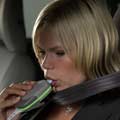 Breathalyser
Breathalyser
Drink. Drive. Bloody impossible. Or at least it will be when breathalyser locks start spreading through the equipment lists. They're already here in limited aftermarket form, and there are court-directed 'alcolock' programs for repeat DUI offenders.
Discussion about alcolocks becoming mandatory is just at murmur level right now, but will get louder - with safety, parental and medical lobbies adding their voices (and political clout). Don't be surprised to see the devices follow seatbelts and stability control as a regulation in the future.
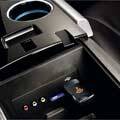 WiFi
WiFi
It's going to be peak hour on the information superhighway, with cars turning into mobile WiFi hotspots. And not just in prestige brands. Mainstream models like the Ford Focus are spearheading the roll-out, with the little car getting the SYNC system to allow WiFi device connection in European markets from next year.
There's no confirmation yet on how soon after that it will arrive in Australia, but - given our almost insatiable appetite for mobiles devices - you can't imagine it will be too long. Maybe by then we'll have a proper broadband system, and can return the current one to Somalia.
 Smartphone integration
Smartphone integration
We're already seeing cars - and some aftermarket systems - that connect to your phone's music and more recently to your text messages. But technology waiting in the wings will allow you to integrate a smartphone more fully, allowing you to access its apps, GPS and other features.
The in-dash screen is possibly going to overtake behemoth speakers as the aftermarket 'must have' and scarily this this is set to expand and explode as quickly as music player integration did over the past decade.
 Parental lock-outs
Parental lock-outs
Not just for the internet and naughty pay-TV channels. Soon you'll be able to restrict a raft of your car's features to put some limits on other drivers - meaning teenagers with shiny new licenses - who use it. The speed limiter will be a popular setting. Neighbours, or perhaps the whole neighbourhood, will thank you for setting a ceiling on the stereo volume.
But your offspring will probably curse you most for the latest tech to join the limiter line-up: the phone lock-out. Yes, you'll be able to stop them making or taking phone calls and texts, which will all be saved so they can respond when they get off the road. And the message that dialling and driving is stupid might just spread to phone-happy parents.
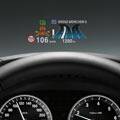 V2V with crash avoidance
V2V with crash avoidance
There are two main streams being developed in collision avoidance. We're already starting to see the cruise-control systems that lock onto the car ahead and start applying brakes if you get too close - with a couple of the most sophisticated able to bring you to a complete stop in low-speed situations. Behind that technology are vehicle-to-vehicle (V2V) communication systems that are able to see further afield.
Using GPS tracking and transponder technology, your car will be able to read the behaviour of all the others within a 400-metre radius or more. So if it detects a cluster of stopped cars ahead, or that traffic is swerving around something - like a patch of ice - on the mapped infrastructure, it takes evasive action before you can even see the problem.
 Parking helpers
Parking helpers
No, not the ones that actually park your car - although they're becoming more common too. This helper will search the area around your destination to find you the best possible vacant parking spot, offering options like proximity and price comparisons.
Systems being tested in the US are mining traffic and parking data and using algorithms to result in predictive parking - giving you an indication of where you are likely to find vacant spots hours ahead. The helpers crunches all the information on recorded vacancy rates of parking spots, fees, traffic patterns and even special events. So you can avoid the endless circling, circling, circling.
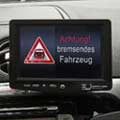
Vehicle-to-infrastructure
Simple types of V2I communication are already here in the form of electronic tolls, and satnav speed, school zone and camera warnings. But expect to see more sophisticated traffic snarl reporting systems, traffic light synchronisation and - eventually - integration with speed limit infrastructure that can change speeds as traffic demands.
It's aimed at keeping the cars flowing smoothly in city areas, but also at cutting the road toll. All of which sounds like a no-brainer for government, until you remember it will also cut the lucrative speed camera revenue.
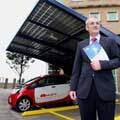 Solar chargers
Solar chargers
Electric cars can claim to have zero emissions at the tailpipe, but fi they draw their charge from the grid, there's an emissions count at the power station. Solar charging stations using photovoltaic cells bypass the problem. Internet heavyweight Google - who even the harshest critics would admit have a pretty good business decision track record - has invested in a system being rolled out in California.
And Australia's climate should make most of our capitals a decent prospect for anything powered by the sun. However that hasn't proved to be the case with hot water systems, so it remains to be seen how green th e electric car push is prepared to go.
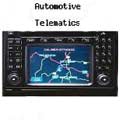 The Cloud
The Cloud
A global network is being created to put telematics in cars via cloud-based computing. The spark is for electric vehicles to charge and manage their battery systems, but it will also manage GPS, telecommunications and multimedia - including streaming music.
What might make it a contender against other systems arriving into the market? The project is a joint venture between Microsoft and Toyota - both giants in their fields, and also both in the habit of aggressively growing in any area they enter.
![]() Anti-theft GPS tracking
Anti-theft GPS tracking
Fleets are already using GPS vehicle tracking systems (GPS VTS) - as are some owners of expensive cars. If the car moves from where it's supposed to be, in some cases by even 100 metres or so, an alert is raised and the car's location is able to be tracked down.
This has generally been done through fairly expensive computer software, operated either by the fleet owner or by a tracking service that provides the anti-theft device. However cheaper systems and software are being released that will put the technology within reach of most drivers with smartphones.
And at the same time the tracking devices have become so small that thieves now find them difficult to locate and remove. With one of these on board, if your car is moved, it will send you a text alert - and then keep updating you of its whereabouts.
And then there's the technology that just didn't make it - despite looking like the Next Big Thing at the time.
FAILED
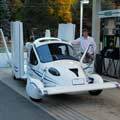 Flying cars
Flying cars
We were all supposed to be flying around in these by now, according to predictions 50 years ago. Yes, there are 'flying cars' being built - most notably the Terrafugia Transition - but they're more accurately described as small planes with folding wings. And they're from being widely available as an everyday vehicle, which is a good thing when you consider some of the driving you see every day.
 Segway
Segway
All the buzz prior to the Segway's unveiling in 2001 touted it as world changing: predicted to provide cheap transport, refine how cities are designed, and be the latest in cool. Instead it turned out to be expensive, with limited uses and faintly dorky.
Instead of redesigning, cities around the world have resisted allowing them except in very limited circumstances. The Segway's case won't be helped by the death of its owner. British millionaire Jim Heselden, went over a cliff with his own Segway in 2010, less than a year after buying the company.
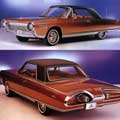 Gas turbine cars
Gas turbine cars
The idea must have looked tempting to Chrysler. A powerful engine with fewer moving parts, durability and able to run on virtually any fuel (a prototype in Mexico was said to have run on tequila). The test fleet of 50 cars got good reports in the late 60s, but 1970s brought the first fuel crisis and emissions restrictions, both of which helped make sure the design never made it to the production line.
 Steam cars
Steam cars
The early steam cars built on everything that had been developed for rail engines, giving the technology a solid head start. They were smooth and fairly quiet. But the external combustion process lost out in the early 1900s to the internal combustion engine which didn't need to build up heat to start, didn't have the extra weight of a boiler - and didn't need to be constantly topped up with feedwater as you drove.
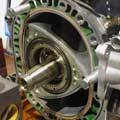 Rotary engines
Rotary engines
While the similar approach of radial engines was popular in aircraft, rotary engines - where the crank stays still and the cylinder block rotates around it - have had a crack in cars (and bikes). Up until WWI they were favoured for their power-to-weight ratio, but after that started vanishing. The best known modern examples are from Mazda, who persevered with the technology long after everybody else had abandoned it. But the last of those cars is about to roll off the line, and while it will continue to have diehard fans, its time is over.


.jpg)


.jpg)














Comments